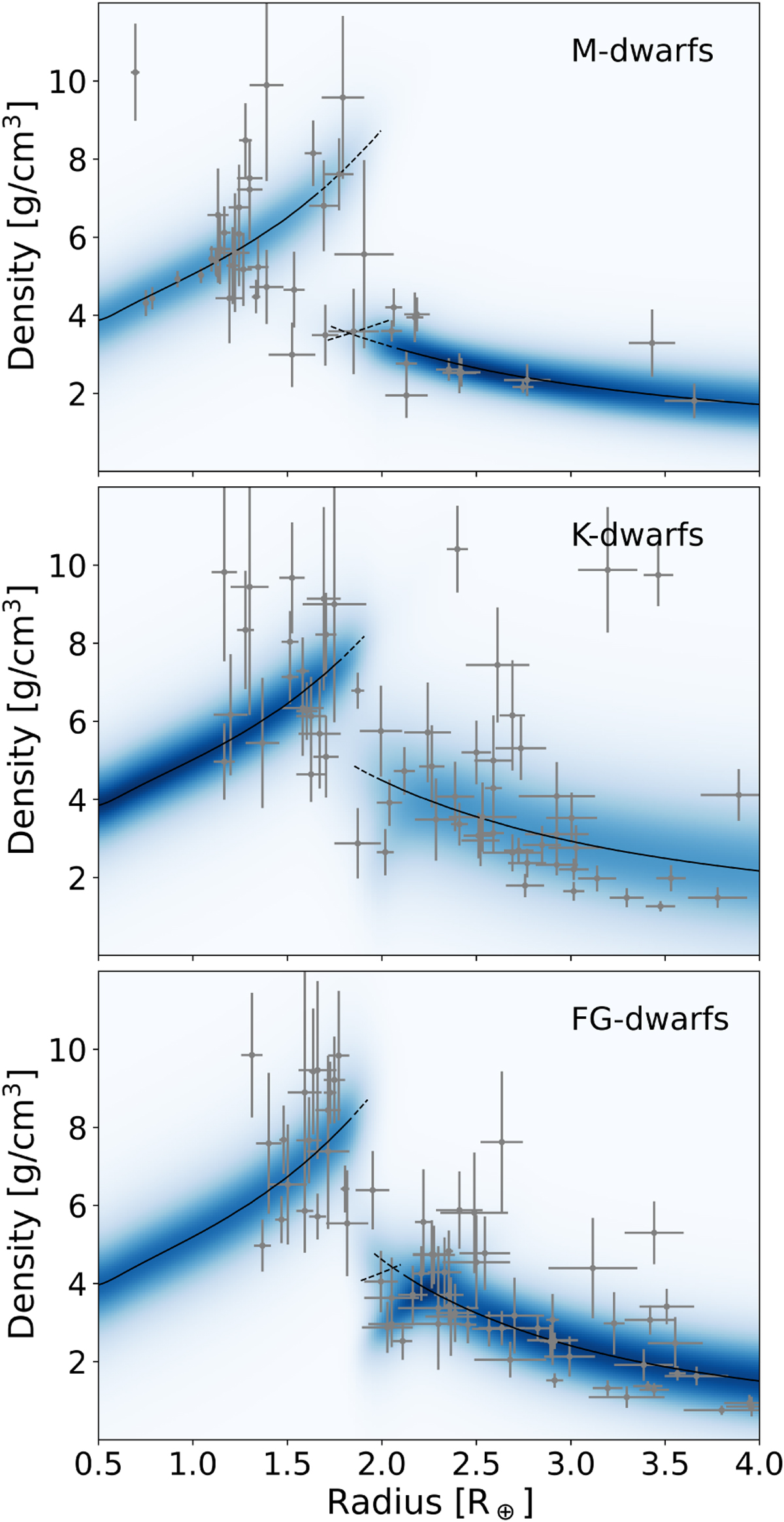Fig. 5

Download original image
Numerical radius-density probability model applied to small planets orbiting M-, K-, and FG-dwarfs from the PlanetS catalog (top, middle, and bottom panel, respectively) using spright and the water-rich planet density model proposed by Aguichine et al. (2021). Gray data points represent measured values with associated uncertainties for planets in our sample. The blue map depicts the logarithm of the posterior probability, and the black lines indicate posterior means for each of the three planet populations (“rocky”, “water-worlds”, and “sub-Neptunes”). The solid lines denote radius regimes where the component has a weight of unity, meaning all planets in this range belong to this specific component, while the dashed lines mark transition regimes between populations. This clearly shows that the “water-worlds” population is only considered as a transition between the other two populations, and not as a distinct population.
Current usage metrics show cumulative count of Article Views (full-text article views including HTML views, PDF and ePub downloads, according to the available data) and Abstracts Views on Vision4Press platform.
Data correspond to usage on the plateform after 2015. The current usage metrics is available 48-96 hours after online publication and is updated daily on week days.
Initial download of the metrics may take a while.


